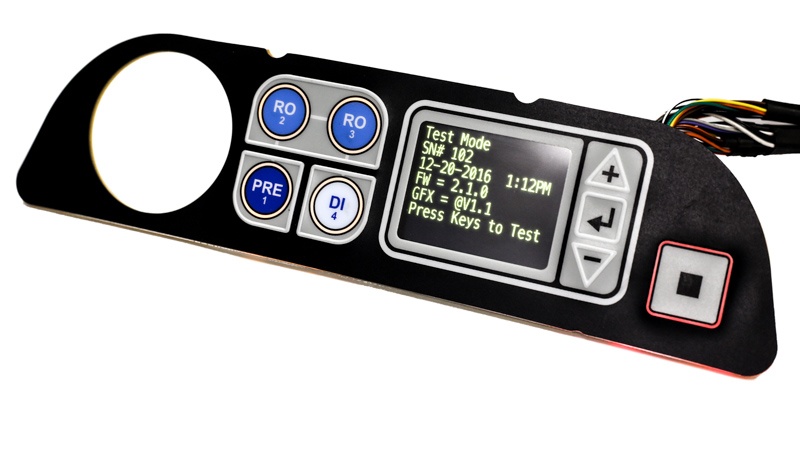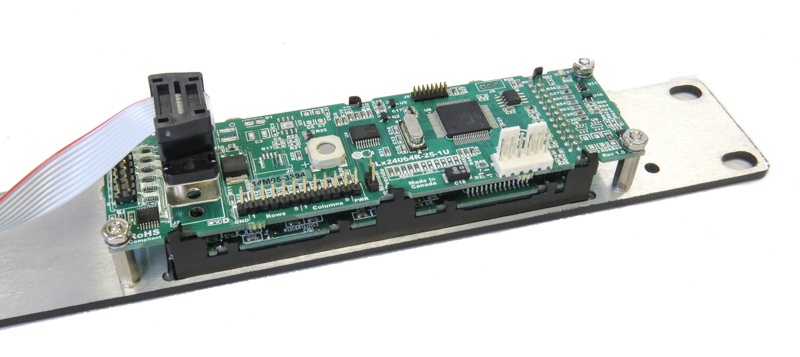In all likelihood right now as you read this post, there is a smartphone somewhere on your person, on your desk, or otherwise within reach. These products have become much more than just a means of communicating with others.
Smartphones are able to provide nearly irreplaceable user experience. You can order take-out, plan a trip, check the weather, get traffic updates, buy groceries, and some people can even do their job - all while using a smartphone. The difference between a traditional phone and a smartphone is that the latter is capable of significantly improving the user’s experience through a series of guided user interface steps.
Just like the evolution of the smartphone, SMART Human-Machine Interface (HMI) products are able to provide a greater user experience and enhanced functionality through various technology advancements and the integration of systems on a traditionally “dumb” product.
Traditional Style HMIs
The traditional HMI, membrane switch, or keypad is essentially a mechanical switch and is a “dumb” product. These products are typically a number of tactile or dome switches, wired in series and in parallel. In most instances, the only true human to machine/machine to human interaction is an illuminated LED, or the tactile feedback of the switch actuation.
Traditional HMIs do not have the capability to process data, manage information, show instructional images, and most importantly, it cannot guide the user through an experience.
These types of user interfaces are reliant on external systems in order to function and provide true human to machine/machine to human interaction.

Traditional Style Human-Machine Interface
Utilizing Technology to Advance User Experience
SMART HMIs allow the user to interact with an unlimited number of experiences and can also convert a traditionally “dumb” product into a display that can manage and process data.
Through the use of programming and hardware choices like multi-colored LEDs, capacitive touch technologies, tone generators, or LCD displays, the SMART HMI is able to guide the user through the experience that the manufacturer/designer intends- step by step. For example, they can turn capacitive touch pads on and off based on the program state or operate a light-guide panel to illuminate keys, making the user only capable of operating the switches that help guide them through a predetermined experience.
They can also be programmed to display a sequence of images or animations on an integrated LCD screen that is further able to instruct and guide the user through a predetermined experience.

SMART Human-Machine Interface Display
They can be fully programmable to support any number of options that the end user will need. For example, these devices can be programmed in multiple languages allowing the user to select the desired language for operation without requiring to be pushed through the main board.
Another example of how SMART human-machine interfaces can be custom tailored is that the same hardware can be programmed in numerous different firmware versions which allow displays to be used for various settings. This allows for Private Labeling of the display and represents a truly customizable solution.
SMART HMIs Can Consolidate Systems
Consider a situation where a membrane switch must communicate via a serial bus connection to another location within the assembly. Traditionally this would require the design and development of a standalone membrane switch and then the design and development of a second intermediary board. For example, the intermediary board would need to be capable of converting parallel data transmission of “ON / OFF” switches to a single wire serial interface connection.
This hypothetical example is able to be turned into a SMART HMI by designing the intermediary board to be collocated within the traditional membrane switch assembly. If this requirement is accounted for early enough in the development cycle, there may be enough real estate on the backside of the membrane switch backer to incorporate the intermediary circuit.
SMART user interfaces can do more than process data, they can also sense, calculate, store, and manage data. This allows the main system that they support to be further simplified.
A SMART interface can be designed with an onboard thermistor to measure the ambient temperature and display on the collocated LCD screen. They are then able to be programmed with a specific Ω/°F calibration curve and calculate ambient temperature autonomously. This eliminates the need to send the resistance data value to the main CCA, process the data, and push it back to the display.
Programmable Logic Controllers
PLCs (Programmable Logic Controllers) are used in just about every industry and are an effective way to read inputs, execute a program, process, and generate an output. SMART HMIs can be designed and programmed to be used as a drop-in replacement for PLCs and can even be designed to replace other data processing elements within the system.

HMI with Programmable Logic Controller
For applications where several hundred or several thousand PLCs, it may be more cost effective to design a custom SMART interface rather than source and program an off the shelf PLC.
What Options Will Work Best For You?
With all the functionality that goes into designing and manufacturing a SMART human-machine interface for your application, it is important to know the goals the product is designed to achieve. In our experience getting your suppliers engineering team involved early on in the design stage drastically helps get the product to market faster.
Summary
The evolution of Human-Machine Interfaces (HMIs) mirrors the transformation of smartphones from simple communication tools into powerful, user-focused systems. Traditional HMIs, like membrane switches and keypads, are limited in function, relying on external systems for processing.
In contrast, SMART HMIs integrate hardware and software to provide guided, interactive experiences. Through features such as capacitive touch, LCD displays, and programmable controls, SMART HMIs can process, manage, and display data directly. They can also consolidate multiple system components, replacing intermediary boards or even PLCs, ultimately simplifying designs and improving functionality.
Early collaboration with experienced engineering teams is key to optimizing SMART HMI development for cost, performance, and time-to-market.
Key Takeaways
- Traditional HMIs are limited in capability: They function primarily as mechanical switches, relying on external systems for processing and offering minimal user interaction.
- SMART HMIs enhances the user experience: By integrating displays, touch controls, and programmable LEDs, they can guide users through intuitive, step-by-step interactions.
- Customization drives flexibility: SMART HMIs can be programmed in different languages or firmware versions, supporting multiple product configurations and private labeling.
- System consolidation saves cost and complexity: Integrating processing hardware directly into the HMI eliminates the need for intermediary components and can handle sensing, calculation, and display tasks autonomously.
- Engineering collaboration is critical: Engaging experienced design and manufacturing partners early ensures that SMART HMI solutions meet functional goals efficiently and reach market faster.
















